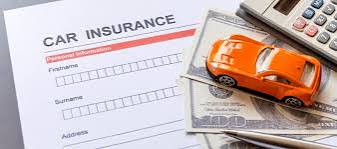Introduction
Car insurance is a crucial financial safeguard that provides protection against financial losses arising from accidents, theft, or damages to your vehicle. It is a legal requirement in most countries and serves as a safety net for drivers, passengers, and other road users. In this guide, we will explore various aspects of car insurance, including types, benefits, factors affecting premiums, and tips for choosing the right policy.
Types of Car Insurance
Understanding the different types of car insurance is essential to choosing the right coverage. Here are the primary types:
1. Third-Party Insurance
This is the most basic type of car insurance and is often mandatory. It covers damages caused to other vehicles, property, or individuals in an accident where you are at fault. However, it does not cover your own vehicle’s damages.
2. Comprehensive Insurance
Comprehensive insurance provides extensive coverage, including third-party liabilities and damages to your own vehicle due to accidents, natural disasters, theft, or vandalism. This is ideal for those looking for complete protection.
3. Collision Insurance
This type of insurance specifically covers damages to your car resulting from collisions with other vehicles or objects, regardless of fault.
4. Personal Injury Protection (PIP)
PIP covers medical expenses for you and your passengers, regardless of who is at fault. It may also cover lost wages and rehabilitation costs.
5. Uninsured/Underinsured Motorist Coverage
This coverage protects you if you are involved in an accident with a driver who has little or no insurance. It ensures that your medical and repair expenses are covered even if the at-fault driver lacks sufficient coverage.
Benefits of Car Insurance
Car insurance offers several benefits, including:
- Financial Protection: Covers repair costs and medical expenses after an accident.
- Legal Compliance: Meets the legal requirements of most countries.
- Peace of Mind: Reduces stress in case of an accident or theft.
- Protection Against Natural Disasters: Covers damages caused by floods, storms, or fire.
- Third-Party Liability Coverage: Prevents financial burden from damages to others’ property or injuries.
Factors Affecting Car Insurance Premiums
The cost of car insurance varies based on several factors. Here are some key elements that influence your premium rates:
1. Age and Driving Experience
Young and inexperienced drivers typically pay higher premiums due to their higher risk of accidents.
2. Vehicle Type and Model
Luxury and high-performance vehicles usually have higher insurance costs due to expensive repair and replacement costs.
3. Driving History
A clean driving record with no claims or traffic violations leads to lower premiums.
4. Location
Living in urban areas with high traffic and accident rates can increase your premium compared to rural areas.
5. Coverage Level
Comprehensive policies cost more than basic third-party insurance due to their extensive coverage.
6. Credit Score
In some regions, a good credit score can lead to lower insurance rates.
How to Choose the Right Car Insurance Policy
Selecting the right car insurance policy requires careful consideration of your needs and budget. Follow these steps to make an informed decision:
- Assess Your Needs: Determine the level of coverage required based on your vehicle’s value and usage.
- Compare Policies: Research different insurance providers and compare their offerings.
- Check Policy Inclusions and Exclusions: Understand what is covered and what is not.
- Read Customer Reviews: Look at customer feedback to gauge the reliability of the insurer.
- Consider Deductibles: Higher deductibles lower premiums but increase out-of-pocket costs in case of a claim.
- Look for Discounts: Many insurers offer discounts for safe driving, bundling policies, or installing safety features.
Frequently Asked Questions (FAQs)
1. Is car insurance mandatory?
Yes, in most countries, at least third-party insurance is legally required to operate a vehicle.
2. Can I transfer my car insurance to a new vehicle?
Yes, most insurers allow policy transfers when you purchase a new car.
3. What happens if I miss my premium payment?
Failure to pay premiums on time may result in policy cancellation or loss of coverage.
4. How can I reduce my car insurance premiums?
Maintaining a clean driving record, opting for higher deductibles, and availing discounts can help lower premiums.
5. Does car insurance cover natural disasters?
Comprehensive car insurance typically covers damages due to floods, storms, and other natural disasters.
Conclusion
Car insurance is an essential financial tool that provides security and peace of mind while driving. Understanding the different types of coverage, factors affecting premiums, and how to choose the best policy will help you make informed decisions. Always compare policies and read the fine print before making a commitment to ensure you get the best protection at a reasonable cost.
